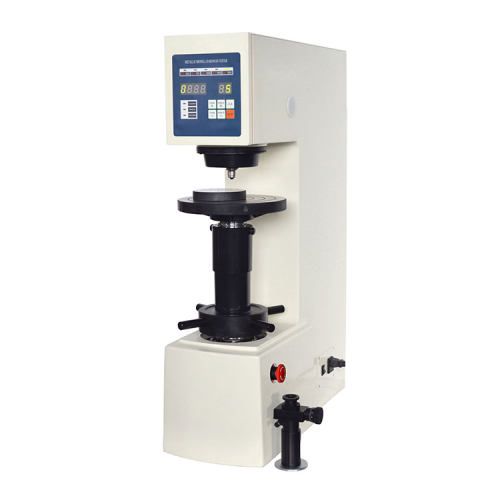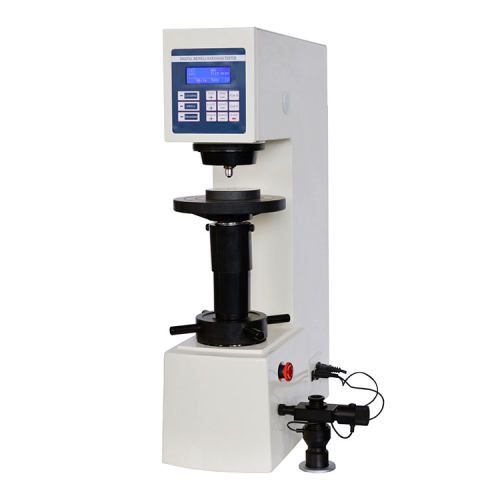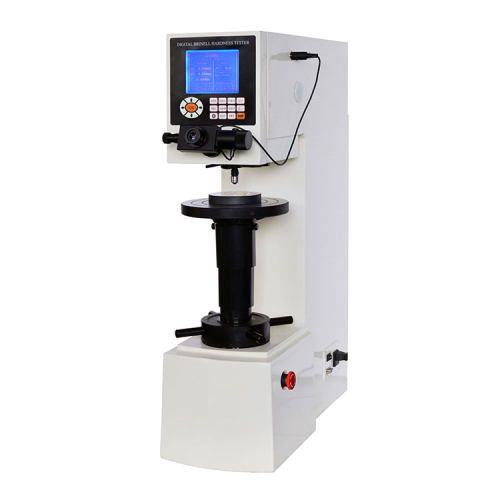The Brinell hardness tester is a workhorse in the world of material characterization. Its ability to measure the hardness of a wide variety of materials makes it a vital tool for engineers, manufacturers, and quality control professionals. However, navigating the selection process and ensuring accurate measurements can be daunting, especially for beginners. This article serves as your comprehensive guide to Brinell hardness testing. We’ll explore how to choose the right tester for your needs, recommend beginner-friendly models, and finally, unveil the common sources of error to watch out for.

How to Choose the Right Brinell Hardness Tester
Selecting the appropriate Brinell hardness tester is crucial for ensuring accurate and reliable hardness measurements. Several key factors should be considered to make an informed decision:
1. Material Type and Hardness Range
The type of material you need to test will determine the test load and indenter size required. For example, softer materials like aluminum require lower test loads and smaller indenters, while harder materials like steel require higher test loads and larger indenters. The hardness range of the material will also determine the type of hardness tester you need. For example, a tester with a range of 100-650 HB is suitable for testing soft to medium-hard metals, while a tester with a range of 650-3000 HB is needed for testing harder metals.
2. Test Precision and Accuracy
The precision of a hardness tester refers to the ability to produce consistent results when repeated measurements are made on the same sample. The accuracy of a hardness tester refers to how closely its results match the true hardness of the material being tested. Both precision and accuracy are important for ensuring reliable hardness measurements.
3. Ease of Operation
The hardness tester should be easy to operate and maintain. The controls should be clearly labeled and easy to understand, and the software should be user-friendly. The tester should also be easy to clean and calibrate.
4. Brand Reputation and After-Sales Service
Choosing a hardness tester from a reputable brand can help ensure that you are getting a high-quality product that will be reliable and durable. The company should also offer good after-sales service, in case you need help with the tester or if it needs to be repaired.
5. Budget Constraints
Hardness testers can range in price from a few hundred dollars to several thousand dollars. The price of the tester will depend on the features you need, such as precision, accuracy, and ease of use. It is important to set a budget before you start shopping for a hardness tester and to compare prices from different vendors.
6. Test Range
The test range of a hardness tester is the range of hardness values that it can measure. The test range you need will depend on the materials you need to test. For example, if you need to test both soft and hard metals, you will need a tester with a wide test range.
7. Test Method
There are three different test methods for Brinell hardness testing: A-scale, B-scale, and C-scale. The A-scale is used for testing soft metals, the B-scale is used for testing medium-hard metals, and the C-scale is used for testing hard metals. The test method you use will depend on the hardness of the material you are testing.

Recommended Brinell Hardness Tester Entry-Level Models for Beginners
For beginners, I would recommend the DHB-3000 Brinell Hardness Tester. It is an affordable and easy-to-use tester that is suitable for a wide range of applications. It has a test load range of 150-3000 kgf and can be used to test a variety of materials, including metals, plastics, and ceramics. Here are some of the reasons why the DHB-3000 is a good choice for beginners:
- Affordable: The DHB-3000 is one of the most affordable Brinell hardness testers on the market. This makes it a great option for beginners who are on a budget.
- Easy to use: The DHB-3000 is very easy to use. It has a simple interface and is straightforward to operate. This makes it a good choice for beginners who are not familiar with Brinell hardness testing.
- Versatile: The DHB-3000 can be used to test a wide range of materials, including metals, plastics, and ceramics. This makes it a good choice for beginners who need a tester that can be used for a variety of applications.
Here is a table that compares the DHB-3000, MHB-3000, and XHB-3000 Brinell Hardness Testers:
| Feature | DHB-3000 | MHB-3000 | XHB-3000 |
| Test load range | 150-3000 kgf | 150-3000 kgf | 150-3000 kgf |
| Accuracy | ±0.5 HB | ±0.3 HB | ±0.2 HB |
| Resolution | 0.1 HB | 0.1 HB | 0.1 HB |
| Test cycle time | 5 seconds | 5 seconds | 5 seconds |
As you can see, the DHB-3000 is a good all-around choice for beginners. It is affordable, easy to use, and versatile. If you need a more accurate tester, the MHB-3000 is a good option. However, it is more expensive and may be more difficult to use for beginners. If you need the most accurate tester, the XHB-3000 is the best choice. However, it is also the most expensive. Ultimately, the best Brinell hardness tester for you will depend on your individual needs and budget. Consider the factors I have discussed above to make an informed decision.
Common Sources of Error in Brinell Hardness Testing
| Source of Error | Description |
| Test load error | Weight accuracy: The accuracy of the weights used to apply the test load can affect the hardness measurement. Friction and inertia of the loading mechanism: The friction and inertia of the loading mechanism can introduce error into the test load. Change in lever ratio: A change in the lever ratio of the loading mechanism can affect the test load. Perpendicularity of the applied force to the specimen surface: The applied force should be perpendicular to the specimen surface to ensure an accurate measurement. Smoothness of the loading process: The loading process should be smooth and free of jerks or vibrations. |
| Indenter error | Diameter error: The diameter of the indenter should be accurate to within the specified tolerance. Deformation of the indenter during loading: The indenter should not deform during loading, as this can affect the hardness measurement. Surface roughness of the indenter: The surface roughness of the indenter should be within the specified tolerance. |
| Measuring microscope error | Scale error: The scale of the measuring microscope should be accurate to within the specified tolerance. Field of view clarity: The field of view of the measuring microscope should be clear and free of aberrations. Light source and illumination: The light source and illumination should be adequate to allow for accurate measurement of the indentation diameter. |
| Test condition error | Variation in loading rate: The loading rate should be constant and within the specified tolerance. Error in test load holding time: The test load should be held for the specified time to ensure an accurate measurement. Room temperature and environmental conditions: The room temperature and environmental conditions should be controlled within the specified limits. |
| Specimen error | Insufficient specimen thickness: The specimen thickness should be sufficient to accommodate the indentation without causing deformation of the specimen’s back side. Surface condition and surface roughness: The specimen surface should be clean, smooth, and free of defects. Out-of-parallelism of the working surface and the supporting surface: The working surface of the specimen should be parallel to the supporting surface to ensure an accurate measurement. |
| Operator error | Improper operation: The operator should follow the correct operating procedures for the Brinell hardness tester. Aiming and reading errors: The operator should carefully aim the indenter at the desired location and read the indentation diameter accurately. Other operator errors: Other operator errors, such as dropping the specimen or bumping the tester, can also affect the hardness measurement. |
To minimize these errors, you should:
- Use calibrated equipment: Ensure that the Brinell hardness tester and all associated equipment are properly calibrated and maintained.
- Follow the correct operating procedures: Follow the manufacturer’s instructions for operating the Brinell hardness tester.
- Test in a suitable environment: Test in a controlled environment that is free from vibration, dust, and temperature fluctuations.
- Train operators: Properly train operators on the use of the Brinell hardness tester.
- Regularly maintain the equipment: Regularly maintain the Brinell hardness tester according to the manufacturer’s instructions.
- Use reference materials: Use reference materials to verify the accuracy of the hardness measurements.

Conclusion
By understanding the factors influencing Brinell hardness tester selection, familiarizing yourself with entry-level models, and recognizing potential error sources, you’ll be well-equipped to leverage this powerful technique. Remember, consistent calibration, proper testing procedures, and a controlled environment are key to achieving reliable Brinell hardness measurements. With this knowledge from hardness tester supplier Scopelab in hand, you can confidently assess the mechanical properties of your materials and ensure their suitability for various applications.


